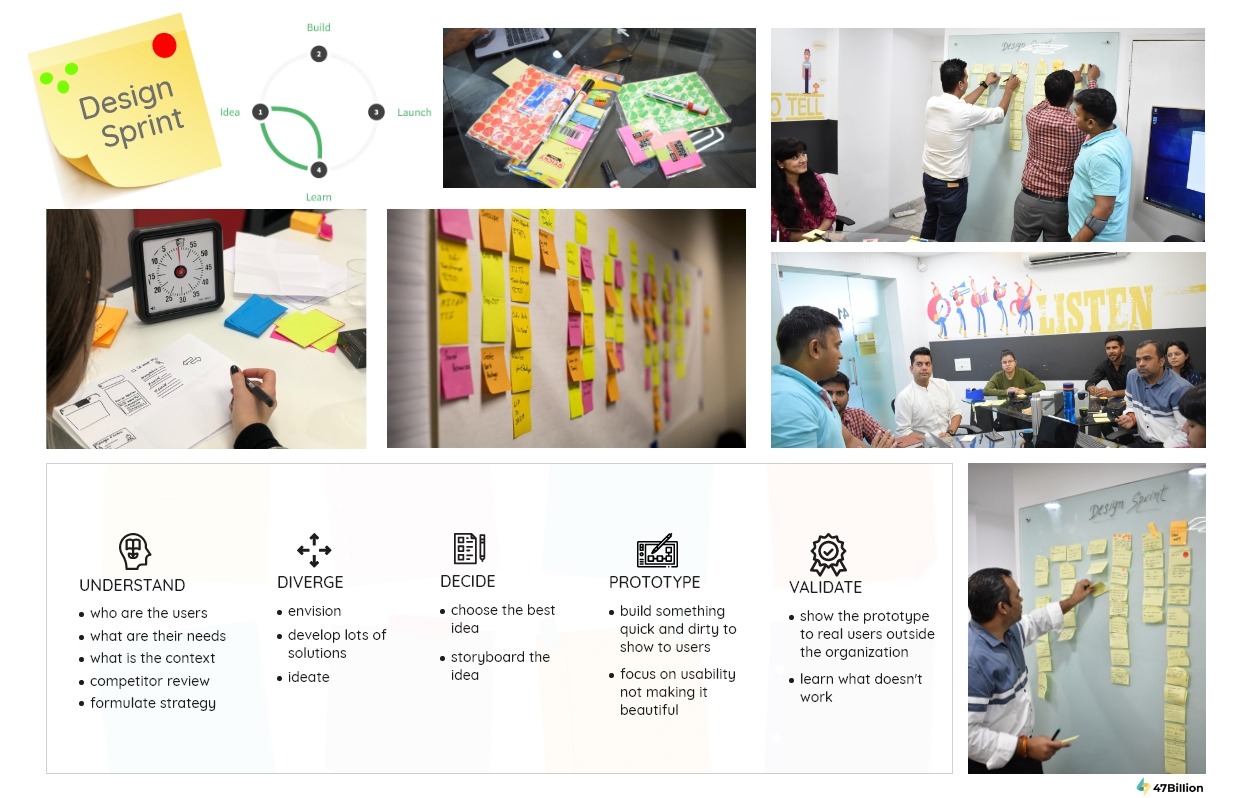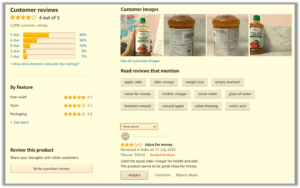You all are aware of the fact that when multiple brains discuss a challenge they are facing, several outstanding solutions are on the table for the problem being discussed.
This is the core concept of the ultimate five days process called Design Sprint. It is a process utilized for validating ideas and solving big challenges through prototyping and testing ideas with customers.
Design Sprint is an alternative to learning without building and launching.
As said the process requires a bunch of people for a design sprint. The team will be mainly consisting of –
Decider
The stakeholders should be involved in the discussions since their decision will influence the long-term goal and the final product.
Facilitator
The one who tracks the progress of the team during the process of design sprints and ensures that all are working on their part. They remain unbiased at the time of decision-making.
Marketing Expert
The person who is the face of the company.
Customer Service
They interact with the customers and understand the complete user base of the company.
Design Expert
They visualize the product.
Tech Expert
The one who is responsible for the technical development of the product.
Financial Expert
They can explain the cost and return for the project.
The day-wise targets
Day 1
Understanding the Problem
At the start of the sprint, the team should be acquainted with the reason for conducting the sprint. In the very first phase team is required to set a long-term goal that plays the role of GPS for the whole team so that the team members move in the correct direction. This goal is now converted into actionable items. Questions are framed on the basis of assumptions and challenges. They are the sprint questions. The user needs and problems are taken into consideration. Then the team has a voting session for all the problems.
Understanding the pain points of customers
After defining the aim of the process, it is important to understand the customers. So conducting user research is vital.
Know your Customers
Create an empathy map. The map represents the needs and priorities of the customers. The map helps in identifying any key themes and problems affecting your users based on their behavior, captured during the user research and expert interviews.
Customer Journey Map
It is the visual representation of the customer’s end-to-end experience with your product or service. This helps the team to break down a big challenge to a specific target for the sprint.
Swim Lane Diagram
Combining the empathy map with the customer journey map will create a swim lane diagram. This diagram serves to create a heat map of challenges that exist within each step of the customer journey.
Creating an opportunity from the challenge
The “How Might We” is a method used to turn existing challenges into opportunities. Here the team proposes solutions for the challenges being discussed and prioritized. This process includes the dot voting system to prioritize the How Might We notes and decide on which focus area to target for the sprint.
Now decide the Actual Long term Goal
At the end of the day, the deciders need to select one target event to focus on. This will act as the long-term goal which will be focused upon in the rest of the sprint.
Day 2
Ideate the Solutions
Since voting is being done, every person should have a reason for their vote. A sketch is now prepared with the help of a four-step sketch Method: It is an efficient method for getting the approach for the solution.
Notes
Take notes of the goals, opportunities, and inspirations for the first twenty minutes.
Ideas
Formulating thoughts through a sketch.
Crazy 8s
Find a solution with the maximum probability of successful execution and find its 8 different approaches.
Solution Sketch
Make a detailed end-to-end solution in the next half an hour.
How Might We
This HMW method turns existing problems into opportunities. Using the dot voting system to making how might we note and focus on the major area for the sprint.
After this activity, the decider has to finalize the problems for the rest of the sprint.
Day 3
Day for the Final Decision
Reaching a point for the best solution can be carried out in five steps:
Art Museum
Create an art gallery. Put all the sketches on a wall.
Heat Map
Each team member will be given three dot stickers and they will be asked to stick them to the points or sketches which they find interesting.
Speed Critique
All the members will go through the sketches and select a drawing that is not their own and seeks the solution.
Dot Voting
Each member is given a voting sticker, they need to choose a solution and justify their decision.
Supervote
The decider makes the final decision with three votes.
Draw a StoryBoard
Start with five to seven frames to start a storyboard. The first frame should contain the opening scene so that the users get familiar with the product.
Day 4
Prototype in Process
As the storyboard is ready, we focus on building the prototype. Functionality should reflect the prototype. Quality should be a priority while developing the prototype so that it seems real to users. Such as creating mockups using Sketch or Keynote and importing that into a prototyping tool.
Day 5
Testing the Prototype
The prototype testing can be done by taking a maximum of five users that fit into the target customer profile. The questions and tasks that are assigned to the users should reflect a real environment.
Finding Insights from Feedback and Patterns
Identify themes and patterns in feedback after completing the prototype testing and work by prioritizing these into the backlog as features to address in the next iteration of the product.
Conclusion
The design sprint is a user-centered process. It builds products and services based on a solid understanding of the user’s wants and needs. The prototype testing is done with real users who give accurate feedback.
Design Sprint is a democratic process in my point of view as the perspective of each and every person from all levels is taken into consideration.
It removes all the inefficiencies and ineffective discussions as well as helps to obtain a clear vision of the goals upfront.
This process utilizes the design thinking process, reducing product development costs. It forces you to make critical decisions and solve complex problems fast.
Watch Video – Benefit of Design Sprint







